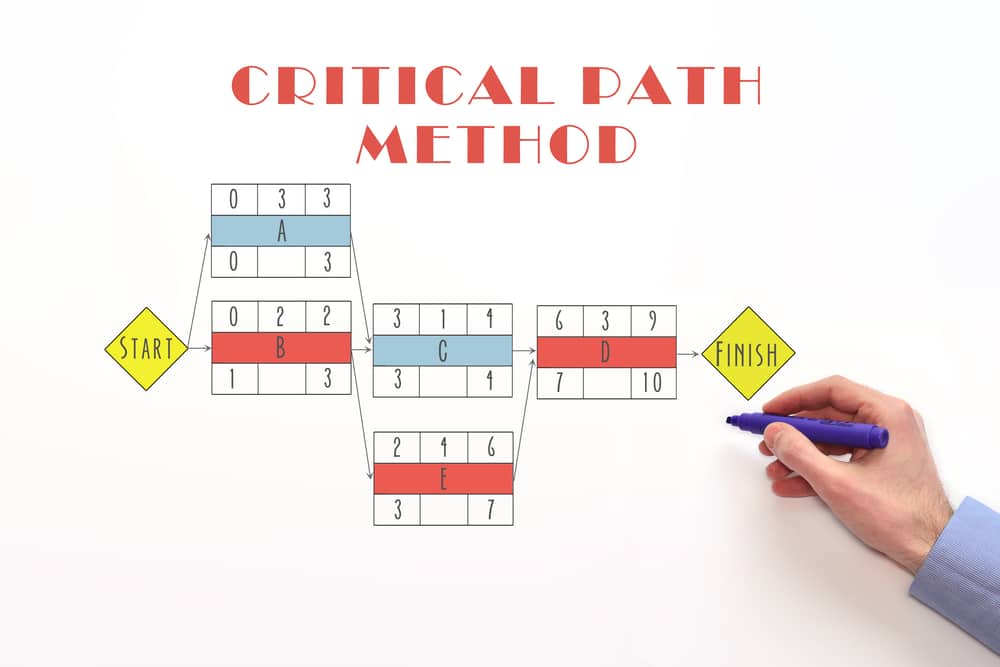At Everglades University, we want to completely equip our students with the information they need to succeed in their field. Many of our students are interested in being a project manager, so we’ve shown you how to get into project management, and the typical stages of the project management process. Next up in our project management series, we’re taking a look at some project management methodologies to get you better organized.
Types of Project Management Methodologies
As we discussed in our 5 stages of the project management process blog, the stage in which you plan out the project should be thorough. Understanding traditional methodologies that already exist and then choosing the best one for your team can help your project run smoothly. Then, you and your team can better approach your projects in the future. Here, we explain 6 of the most commonly used project management methodologies:
- Waterfall Project Management
One of the most widely used traditional project management methodologies (mainly for software or design related projects), the waterfall methodology is a very direct way of handling the workflow of your projects. This method involves a project that is “completed in distinct stages and moved step by step toward ultimate release to consumers.” This methodology is best for projects that can be planned out in full in the beginning and won’t need changes throughout the process.
Requirements: This is the first step of the waterfall method. Like with most planning methods, you first need to examine what the project needs to clearly accomplish. What is the end result of this project need to look like?
Design: If your project involves any software design or engineering, this is the stage where the team decides on the system or technology for that design. What language will be used? What hardware?
This varies from project to project, but typically “20–40% of the time is spent on requirements and design.”
Implementation: Now that you’ve planned out the software and design needs, it’s time to solve any presented issues and come up with the code.
Verification: Of course now your team has to test and retest to make sure the code is working properly. Testing may result in your project starting from scratch if large problems arise.
Maintenance: Once you’ve verified that the finished product is up to par, you deliver the project. But even after the project is complete, the product may need support and updates.
- Agile Project Management
Another one of the most common project management methodologies is the agile method. Unlike the waterfall method, the agile method allows the team to respond to issues as they occur throughout the entire process. The project is broken up into pieces (sprints) and mini launches so the team can stay ahead of any issues. Testing and retesting and many reviews throughout the project can lead to a greater success in the end.
The principles behind this method include satisfying the customer through early delivery of the product, being welcome to changing requirements, and adjusting team behavior after frequent reviews.
- Adaptive Project Management
Our next method is adaptive project management. Even more so than the agile project management method, the adaptive does what the name says: it’s designed so that your team can adapt to changes. Changes like better decisions, updated policies, and revisions after reviews can all affect your project, so this method allows for a greater frequency of those changes. Your team gets to learn by doing and be flexible throughout the process.
This method includes (and update this as needed):
The project scope (what are the goals? What are the requirements and the priority levels of each?)
The cycle plan (What tasks need to be done to complete the project? Who is completing what task?)
The cycle build (Project work begins. What problems have arisen?)
The client checkpoint (Review finished project with client. Make any necessary adjustments.)
The cycle restarts (Based on reviews, the cycle repeats to meet project demands.)
- Critical Path Project Management
The critical path method is often defined as “the longest sequence of activities in a project plan which must be completed on time for the project to complete on due date.” This method can be very helpful for any project because once you have defined the “critical path” of your project that will take the longest amount of time, you can properly designate a work schedule and budget needed to get the job done.
The critical path project management method is represented as above, with earliest start date (A) and latest start date (B), which is determined by the project manager according to the project’s requirements.
- Critical Chain Project Management
The critical chain method, on the other hand, involves planning a workflow that is near perfect but adding time buffers, instead of just focusing on the activities that will take the longest amount of time. Critical chain method builds off of the critical path method in a way that is more flexible.
- PRINCE2 Project Management
Not as common as the other project management methodologies, the PRINCE2 (PRojects IN Controlled Environments) method gives clear responsibilities to each team member and “divides the master project plan into project plans, stage plans, and team plans.” By dividing projects into manageable and controllable stages, it can be completed in an easier fashion. This method’s processes are: starting up a project, directing a project, initiating a project, controlling a stage, managing product delivery, managing stage boundaries, and closing a project.
While you’re carefully considering which method to use for your next project….Did you know? Everglades University offers a Master’s Degree in Business Administration with a Concentration in Project Management, so that you can step into any project with the advanced knowledge and skills to succeed.








